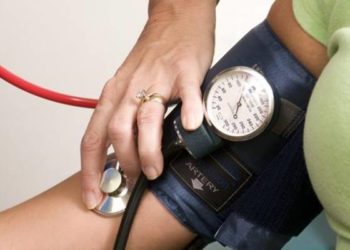Physical activity during pregnancy linked to shorter duration of labour
1. In this prospective cohort study, a higher level of global physical activity during pregnancy was associated with a shorter active stage of labour.
Evidence Rating Level: 2 (Good)
Study Rundown: Previous research has demonstrated the benefits of physical activity during pregnancy, including decreased risk of adverse outcomes in mothers and neonates, such as gestational diabetes, preeclampsia, and macrosomia. However, there is limited evidence describing the relationship between physical activity and labour outcomes. Additionally, any prior literature available tended to focus on exercise rather than all aspects of physical activity which include activity related to caregiving and occupation.
To address this gap in literature, this prospective cohort study analyzed data from 811 women with singleton pregnancies who delivered at a single tertiary care center in Washington. Patients were excluded if they had a major fetal anomaly that would affect delivery timing, had conceived through in vitro fertilization, or were younger than 18 years old. The tool used to measure physical activity was the Kaiser Physical Activity Survey (KPAS) which contained four activity categories, including housework/caregiving, occupation, active living habits, and sports. The patients were stratified into higher and lower activity level groups, defined as third trimester KPAS score >75th percentile and <75th, respectively. The primary outcome measured was duration of the second stage of labour. It was found that the duration of the second stage of labour was similar between patients with lower and higher levels of physical activity. The secondary outcomes measured were duration of active stage of labour, rates of second stage caesarean section, rates of operative vaginal deliveries, severe perineal lacerations (3rd or 4th degree), post-partum hemorrhage, prolonged first stage of labour (defined as >20 hours for nulliparous patients and >14 hours for multiparous patients), and prolonged second stage of labour defined as >3 hours for nulliparous patients and >2 hours for multiparous patients). Analysis found that in patients with higher physical activity, the active stage of labour was significantly shorter, and they were less likely to have a prolonged first stage of labour compared to those with lower activity levels. There were no significant differences in rates of prolonged second stage, second stage caesarian section, operative vaginal deliveries, perineal lacerations, or postpartum hemorrhages amongst the two groups.
A strength of the study was that it accounted for global physical activity levels, using a well-validated scale (KPAS) unlike previous similar studies. The study’s broad inclusion criteria, large sample size and adjustment for various confounders such as obesity, epidural use, and parity also increased its validity.. Regardless of these strengths, the study had certain limitations. Firstly, it was conducted at a single tertiary care center in one city, reducing its generalizability to other populations. Additionally, there were differences in baseline characteristics between the higher and lower activity level groups which were not accounted for in the analysis. Namely, participants of the high activity group were significantly more likely to be of Caucasian descent, demonstrating race as a potential confounding variable unaccounted for. Nonetheless, this study provided unique insight into the relationship between physical activity and pregnancy outcomes, and with greater research may provide valuable information to further inform discussion with pregnant patients.
Click to read the study in AJOG
Relevant Reading: Exercise during pregnancy is associated with a shorter duration of labor. A randomized clinical trial
In-Depth [ prospective cohort]: From the 1200 participants enrolled in the study, 800 completed the KPAS survey in the third trimester. The scores ranged from 4 to 15, with median of 9.5. The 75th percentile for KPAS score was 10.8. Thus participants with score >10.8 were placed in the higher activity level group (n=203, 25%) and those with score <10.8 were placed in the lower activity level group (n=608, 75%). The duration of the second stage of labour was similar between those with higher and lower levels of activity (1.29 + 2.94 hours vs 0.97 + 2.08 hours, p=0.15). The active stage of labour was significantly shorter in the group with higher levels of physical activity (5.77 + 4.97 hours vs 7.43 + 6.29 hours, p<0.01). Additionally, patients with higher activity levels were significantly less likely to have a prolonged first stage of labour compared to those with lower activity levels (9.8% vs 19.4%, p<0.01, aRR [95% CI] 0.55 [0.34, 0.83]). No significant differences between the two groups were found in any other secondary outcomes measured.
Image: PD
©2021 2 Minute Medicine, Inc. All rights reserved. No works may be reproduced without expressed written consent from 2 Minute Medicine, Inc. Inquire about licensing here. No article should be construed as medical advice and is not intended as such by the authors or by 2 Minute Medicine, Inc.







